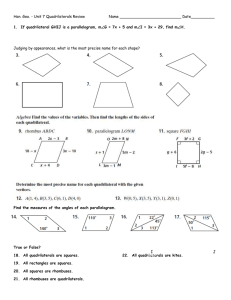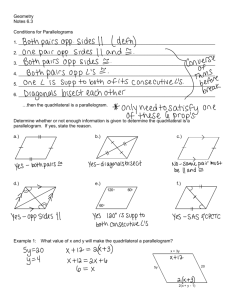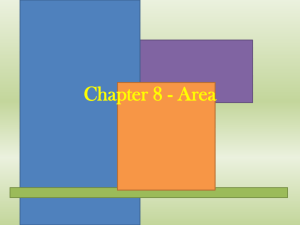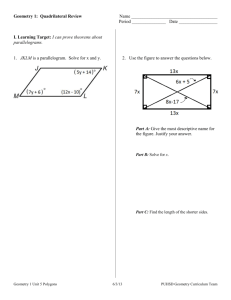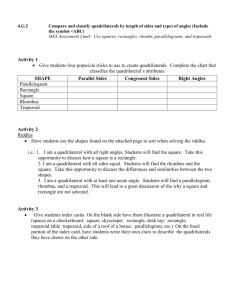Areas of Rectangles to Parallelograms, Triangles, and Trapezoids
advertisement
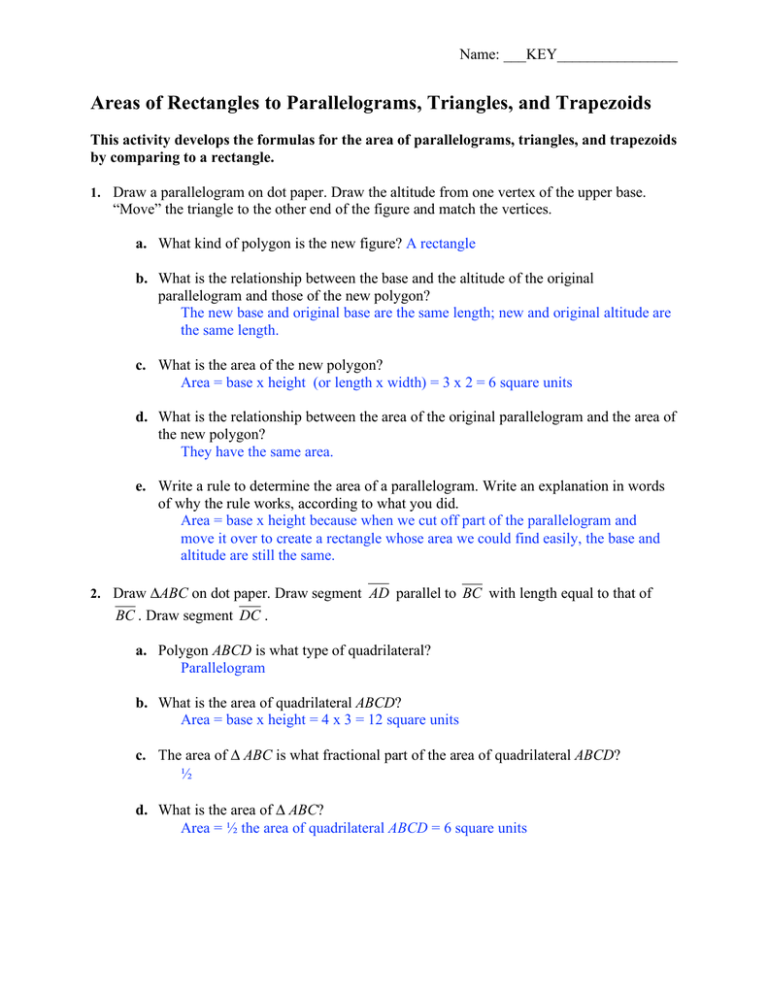
Name: ___KEY________________ Areas of Rectangles to Parallelograms, Triangles, and Trapezoids This activity develops the formulas for the area of parallelograms, triangles, and trapezoids by comparing to a rectangle. 1. Draw a parallelogram on dot paper. Draw the altitude from one vertex of the upper base. “Move” the triangle to the other end of the figure and match the vertices. a. What kind of polygon is the new figure? A rectangle b. What is the relationship between the base and the altitude of the original parallelogram and those of the new polygon? The new base and original base are the same length; new and original altitude are the same length. c. What is the area of the new polygon? Area = base x height (or length x width) = 3 x 2 = 6 square units d. What is the relationship between the area of the original parallelogram and the area of the new polygon? They have the same area. e. Write a rule to determine the area of a parallelogram. Write an explanation in words of why the rule works, according to what you did. Area = base x height because when we cut off part of the parallelogram and move it over to create a rectangle whose area we could find easily, the base and altitude are still the same. 2. Draw ΔABC on dot paper. Draw segment AD parallel to BC with length equal to that of BC . Draw segment DC . a. Polygon ABCD is what type of quadrilateral? Parallelogram b. What is the area of quadrilateral ABCD? Area = base x height = 4 x 3 = 12 square units c. The area of Δ ABC is what fractional part of the area of quadrilateral ABCD? ½ d. What is the area of Δ ABC? Area = ½ the area of quadrilateral ABCD = 6 square units e. Write a rule to determine the area of a triangle. Write an explanation in words of why the rule works, according to what you did. Area = ½ base x height because the triangle has the same base and height as the parallelogram but two triangles together create one parallelogram. 3. Draw a trapezoid ABCD on dot paper. Draw a rotated copy, EFGH ≅ ABCD. Match vertex B with G and vertex C with F to form polygon AHED. a. Polygon AHED is what type of quadrilateral? Parallelogram b. What is the area of quadrilateral AHED? Area = base x height = 7 x 2 = 14 square units c. What is the relationship between the area of trapezoid ABCD and area of quadrilateral AHED? The area of the trapezoid is ½ the area of the parallelogram because 2 trapezoids make up the parallelogram d. What is the area of trapezoid ABCD? Area = ½ base x height (of parallelogram) = ½ (14) = 7 square units e. What is the relationship between the measure of the base of the parallelogram and the measures of the two bases of the trapezoid? The base of the parallelogram is the sum of the two bases of the trapezoid f. Write a rule for determining the area of a trapezoid. Write an explanation in words of why the rule works, according to what you did. Area = ½ (base 1 + base 2) x height because the trapezoid has ½ the area of the parallelogram whose base was the sum of the bases of the trapezoid and the same height as the trapezoid
